Turkish National Movement
Türk Ulusal Hareketi
Keywords: Turkish National Movement
Turkish National Movement
More...Keywords: Turkish National Movement
Turkish National Movement
More...Keywords: Exiles of Malta; National Struggle; Allied Powers; Committee of Union and Progress; Freedom and Accord Party
This study is about the exile of some of important Ottoman soldiers, politicians, intellectual and journalists to the Island of Malta to judge because of some various reasons and accusations in the National Struggle Period. It is aimed at explaining the periods beginning from the exile event to the end of exile within a periodical frame. This search aimed at revealing the events especially during exile and in the Island of Malta. The sources of this study were mostly memories, then archival documents and copyrighted book.
More...Keywords: Ergani; cult; fire; seedbed; family clinic
Family clinics are extremely meningful in Turkish mythology and mostly accepted as holy/sacred in Turkish culture. In family clinics, specific diseases are taken care of and different treatments are performed. Family clinics are generally regarded as holy places among people. In this article, a ritual of disease treatment by a family clinic, in Deringöze village, Diyarbakır's Ergani district, will be examined.
More...Keywords: Suleyman Ulucamgil; Cyprus; Turkish Cypriot literature; independence movement
This work shall elaborate the poem of “January 27th and 28th 1958”, the very work of Suleyman Ulucamgil, one of the most important name of Turkish Cypriot literature in the context of Cyprus events. Elucidating the place of Ulucamgil in Turkish Cypriot literature, the study will analyze how Cyprus events and Turkish independence movement on the island have come to shape the poetry of Ulucamgil.
More...Keywords: Ocak; Ocakli /Ocak Folk Healer; Folk Medicine; Cam / Shaman; Mythological Characteristics
The roots of the practices conducted with the folk medicine and folk remedies date back to cams/shamans. And the “Ocak folk healers” who have a vital place in the Anatolia folk healers came to be as the continuation of cams / shamans. Ocak healers who are believed to possess healing mystical abilities heal certain diseases with traditional method. Along with these traditional methods, some other practices based on faith and magic are used. The ocak healers are believed to gain their supernatural healing abilities genetically. Along with the genetically gained abilities, the knowledge obtained through the mentor- protégé relationship also renders the ocak healers superior. When the treatments and the practices conducted by the ocak healers are examined, it’s understood that these practices base on the cam / shaman beliefs. Among these, ones related to fire, iron, water and happy numbers come into prominence. In this research, putting forth the similarities between the ocak folk healers and cams / shamans who are living in Anatolia is aimed.
More...To date, there is an urgent need to establish common alphabet for Turkic peoples for the written media, book publishing and for the flow of documents. The adopting the Latin alphabet in its pure form is impossible because there are specific sounds (hard and soft consonants) in Turkic languages, which are not reflected in the Latin letter. Creation of a common alphabet should be done through the development of a unified interstate standards. The standard will define rules for using the Latin alphabet. Turkish people are gradually moving to the Latin alphabet. And this transition is inevitable. Researchers must ensure that all the Turkic languages for each sound must be the same graphic sign.
More...Son yıllarda; etnik kimlik, soy, ırk, etnisite, ulus devlet gibi kavramlar çokça tartışılır, üzerinde yazılar yazılır hale gelmiştir. Bu tartışmalar toplumların değerlerinin bütününü oluşturan kültürel yapılarını çok önemli hale getirmiştir. Bu bağlamda, yaklaşık 250 milyon dünya Türk nüfusunun sahip olup yaşattığı değerleri alan çalışmaları ile ortaya koymak ve bu değerleri kültürel strateji anlamında kullanmak çok önemli hale gelmiştir.
More...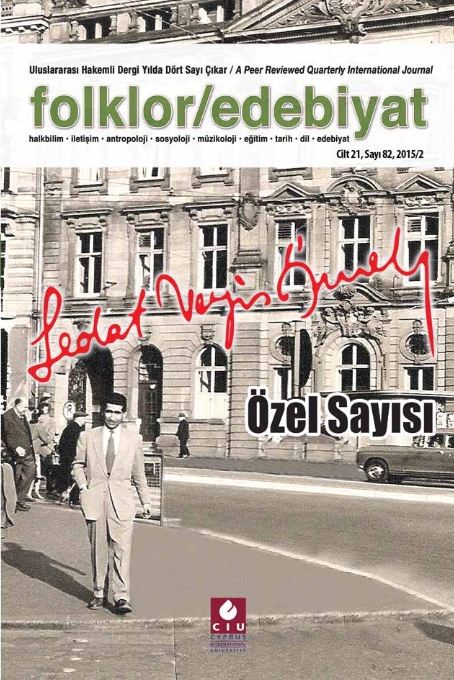
Halkbilimi (folklor), bir ülkenin ya da belirli bir bölge halkının özgün kültür ürünlerinin hepsini kapsayan; bunları kendine özgü yöntemleriyle derleyen, çözümleyen, yorumlayan ve bir bireşime vardırmayı amaçlayan; halk hekimliğini, halk botaniğini, halk meteorolojisini, halk edebiyatını, halk müziğini, halk oyunlarını, geleneksel tiyatroyu, halk sanatlarını, halk inanmalarını, giyim-kuşamı, geleneği, göreneği, töreleri; doğum, evlenme, ölüm gibi yaşamın önemli geçiş dönemleriyle ilgili gelenekleri, pratikleri, törenleri; bayramları; çocuk oyunlarını, yerel dernekleri ve dayanışma örgütlerini, buralara girme törenlerini ve kurallarını; ekim, ürün alma, bolluk ve yağmur duası gibi tarımla ilgili bu törenlerle bu saydıklarımıza ekleyebileceğimiz daha nice konuyu içine alan ve inceleyip araştıran bir bilim dalıdır.
More...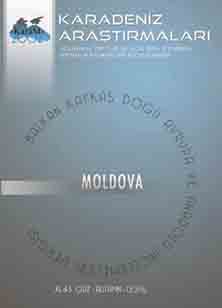
Keywords: Fire; hearth; familiar spirit,; Turkish culture; “ot ana”;
In Turkish culture "fire" and "hearth" has become a cult as a result formed around the various beliefs and practices. It is believed to be familiar spirit of fire and hearth and called “familiar spirit of fire and hearth” to this spirit in general. Because familiar spirit of fire and hearth is believed to be alive, it has been treated like a creature is treated this familiar spirit, insomuch that it was loaded with some human characteristics to this familiar spirit. But, it is called “ot ana” to the familiar spirit in the Turkish world in general and this familiar spirit is illustrated like a woman. In addition to these features, the familiar spirit of fire and hearth in the Turkish culture situated in a divine and in-between position. Some rules and taboos has been formed around the fire and hearth on account of this. In the article, the familiar spirit of fire and hearth will be evaluated in terms of antropomorphic aspect, female appearance, formed around the rules and taboos and its relationship with the harmful spirit.
More...Keywords: World War I.; The Balkans; The Ottoman State; Romania; Bulgaria; Dobruja;
Starting from the beginning of the ninetieth century, the Ottoman State officials prepared reports on the regions, where there’s need, regarding their geographical constriction, population movements (migration) and settlement status, and implemented new policies in line with these reports. Because of its strategic location and the Muslim population is a place to live in, so Dobruja is one of the geographical regions where these policies are applied. While numerous reports were filed on Dobruja in different periods, the number of these reports increased during the World War I. Just as Romania or Bulgaria, the Ottoman Empire was also spending effort to have authority on Dobruja, while these efforts were intensified in 1918. One of the studies carried out within the scope of these efforts is the report named “Dobruca Kıt’asının Ahvâl-i İdariyye ve İçtimaiyyesi” (The Administrative and Social Status of Dobruja Land), which was published by the military publishing house in 1334 (1918) and is preserved in Library of the Department of Ottoman Archives. While the report describes the Romanians’ forcing the Muslim population to migrate on one hand, and Bulgarians’ desires of being settled in Dobruja on the other hand, the given statistics regarding the population draws attention. Dobruja’s becoming an important front during the War, its occupation by the allied countries, establishment of various administrative organizations are also demonstrated important information described. The most important factor that caused the preparation of the Report was determining the structure of the administrative organization to be settled here, regarding the possibility of Dobruja’s being left to Ottoman State again.
More...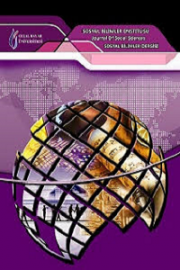
Keywords: New Turkish poetry; scorpion; symbol; literature;
One of the most dangerous and eerie animals of the nature, scorpion has long been used as a motif or symbol from antiquity to present. As an element frequently encountered in mythology, epics, tales, religious texts, reliefs, astrology, cosmology, people's beliefs and practices, the scorpion has also become a poetic symbol. The scorpion symbol as a polysemantic signifier in Turkish poetry tradition, has also continued to be associated with a wide range of ideas in New Turkish poetry. The purpose of this study is to identify the semantic world in which the scorpion symbol appears in the context of New Turkish Poetry.
More...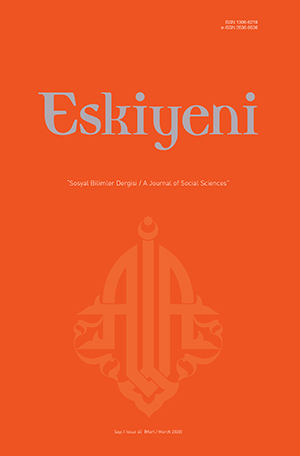
Keywords: Ottoman History; Scutari; Greyhound; Stretchers’ Quarry; Money Foundations;
In this study, the emergence of the Stretchers’ Quarry established in Scutari (Üsküdar), the change it has undergone in the historical process, the outbuildings of the quarry, the money foundations connected to the quarry and their functioning have been tried to be handled mostly in the light of the 18th century Ottoman Judges’s registers and archive records. In connection with the subject, previous studies have been examined and evaluated within the framework of documents. First of all, it should be noted that the tradition of hunting was an action made to meet the food and clothing needs of human beings in the historical process, but over time, it became an organi-zation for monarchs and state administrators to prepare for war with the enemy and sometimes for entertainment. Lethal and wounding tools to catch game animals, beside the falcon, bazzard, sparrowhawkand, goshawk, animals such as greyhound and hound were also used.Units named “chief of hunting” (Shikar Agha) were created in the Ottoman palace and the mili-tary organization, which were dealing with the care of animals used in hunting. The Stretchers’ Quarry, which is the subject of this study, is one of the units in question. Quarry was established in Scutari Garden, which belongs to the Palace in Scutari. The fact that Scutari was preferred as the location can be explained by the location of this place. Because the wide area extending from Scutari and Beykoz to Şile is allocated to the palace as hunting grounds. Scutari, one of the three important provinces of the state on the Anatolian side, is a region equipped with many instituti-ons. Although there is no exact information about the foundation date of the quarry, it is tho-ught that it was built in the same period as Scutari Garden, that is, after 1560’s. The quarry’s emp-loyees were called as tazidji, and those who were at the head were called tazidji corps In addition, since they are affiliated with Bostancıbaşı, the proportion of “bostanjî” (corps) has been added to the end of the employees’ names. “Tazıcıbaşı”, who are selected from people who have a certain status in the society, are responsible for the organziation of the quarry. They had additional duties such as protecting the forests, trees allocated for hunting and preventing anyone from hunting there. In the historical course, it is seen that during the times of extraordinary events, the tazidji and tazidji corps were given various duties to ensure the public order of the city. As it is understood from the records, a part of the financing of the quarry was provided by the income obtained from the foundation properties located around Scutari. Apart from Scutari, there were vineyards devoted to the quarry. Money Waqf, which have become an important part of the Ottoman economic life, also served as a source of financing for the Stretchers’ quarry. The administration of these foundations was undertaken by quarry workers nicknamed bostanî. The money foundations established here played an important role in meeting the needs of not only the quarry personnel but also the masjid in the outbuilding. According to the documents that have survived to date, it has been determined that money foundations are borrowed through one of the operating forms, the mortgage (lease). When the debt records in the court registers in the first quarter of the 18th century are examined, it is seen that Muslims borrow from the money foundations belonging to the palace gardens in the vicinity, and the non-Muslims living in Scuta-ri mostly prefer the foundations of the Stretchers’ Quarry.The quarry’s location which was built on the Karaca Ahmed side of today’s Selimiye barracks included the shelters of the rescuers, the masjid where the quarry’s staff pray, kitchen, barns for greyhounds, the Fountain of Stretchers’, and a tranining area for the archers. The masjid, built in two floors, was rebuilt in the 16th century because it was devastated over time. After the const-ruction of Selimiye Barracks in the 19th century, the masjid disappeared, therefore, not much information could be identified about it.Greyhounds barn is among the most important parts of the quarry. Greyhound has an important place in Turkish hunting culture. The Turks have been familiar with this animal since Central Asia. As a matter of fact, a greyhound called Turkish hound is mentioned in the documents. The ho-unds needed for the Stretchers’ quarry were primarily supplied from Scutari, Kocaeli. If needed, hound was also provided from nearby places such as Bolu and Hüdavendigar. In the time of IV. Mehmed, also known as Hunter Mehmed, hounds were brought from many places to the hunting areas where the sultan was located. According to the information in the archive records, flour was sent from Unkapanı to feed the hounds left in the barn, and the cost was collected from the treasury. The barn, which had existed for many years, was destroyed during the construction of the Selimiye Barracks, and the hounds were transferred to other places. After III. Selim was remo-ved from the throne, the barn was revived. With the abolition of the Janissary in 1826, the Stretc-hers’ Quarry and the stables barn ceased to be needed. According to the records, this place was allocated to horses since 1850. One of the places mentioned together with the Stretchers’ Quarry is the training area of the arc-her. There was an range point for the training of archers, which had a very important place in the classical period wars. According to the record written in 1705, this range point became disfuncti-onal about thirty years ago (1675), and Scutari archers demanded that this place be revived. The only outbuilding we have of the Stretchers’ Quarry today is the Stretchers’ Fountain. This fountain is located in the parking lot of Selimiye Petty Office Club to the right of the road from Scutari to Haydarpaşa. There is the Hasib Pasha Fountain just across the Stretchers’ Fountain. It is said that the Stretchers' Fountain was built by Mimar Sinan. However, in the inscriptions on the fountain, there are statements about the horses placed here after 1850. In the late 1800s and early 1900s, the water sewers around the fountain were repaired, landscaping was made by laying the sidewalk. The fountain was restored in 2019 with the efforts of the 1st Army Command, thus maintaining the historical memory.As a result, the Stretchers’ Quarry, which was built in the second half of the 16th century, continued its existence in Scutari for nearly three centuries. Due to its presence in Scutari, it has affec-ted the political and socio-economic life of this place in many ways. The quarry, 1826, with the removal of the Janissaries and a new management approach, it lost its function.
More...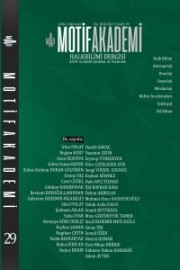
Keywords: Head; magic; mythology; tradition; marriage; faith;
The word “head”, which has many meanings such as basic, essential, original and first, also corresponds to the word “head” which has entered our language from Arabic. Trying to make sense of those around him primarily through symbols and the principle of embodiment, the human being has shaped his cosmological perception by moving from his own body or developed interpretations of the reflection and the like in the cosmos itself. Thus, man defined the cosmic structure through himself and found a place in the literature as” micro-cosmos". For this reason, the head/head was always associated with the upper floor/upper floor/upper realm and was attributed to him with sanctity. In mythological anatomy, man's head represents the top; his back and back represent the middle world; his arms represent rivers and trees; his blood waters; his veins represent the root of the tree; and his feet represent the bottom of the Earth. In addition to expressing the above, the head contains the meanings associated with it such as president, leader, beginning, source, great, first, and the derivatives of the head word also appear as words expressing holiness. On the other hand, in the words “let my head be a sacrifice to you”, “my head is on my eye” or “you have a place on my head”, the person who says that he considers the other person(s) worthy of the most holy place. In addition, the translation of money as a hair type in Turkish beliefs and practices serves the purpose of dispelling the evils that may come to the person/persons. In Turkish culture, the head is another matter, in the traditions associated with marriage, whether the woman's head should be closed or the braid of her hair, whether she is married or single is understood. the use of ‘hair’ which is linked to ‘start’ is also of great importance from a religious point of view. In addition, the head of the animal in our study has been taken into consideration in terms of the belief of the God Box, which is also found in the first place. In our study, the belief in God Box was evaluated in the same context as the animal head in the research. In our target research, the head, face, eye, nose, mouth and ear will be covered in a general manner independent of the first place. It will be more associated with the top of the head. Because the practices related to’ head ' are intended to show the sanctity, God, and the fold of God, of words and groups of words (such as idiom, proverb) derived from the concept. Also the use of the word 'head' brings abundance and abundance; protection from evil eye, accident, trouble and evil spirits shows that the head has taken an important place in our culture. Based on these findings, the words derived from this root and the meanings attached to the words groups will be discussed on the basis of cultural and belief and their functions within Turkish folk culture will be determined.
More...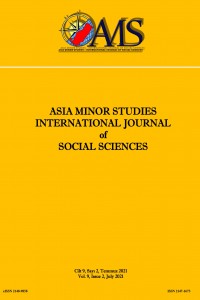
Keywords: Alphabet; Education; Revolution; Turkish;
The Turks, who founded many states throughout history, adopted the Arabic alphabet upon converting to Islam; therefore, writing systems were continuously changed, but the Arabic alphabet could not be fully adapted to Turkish. Especially after the Tanzimat reform era, discussions on the alphabet gained momentum in parallel with the development of the press and publishing industry. These discussions continued in the Republican times. The alphabet reform gained success and was realized in order to ease literacy, to increase the educational and cultural level of the Turkish nation, to form a national culture, and to reach the ideals of the modern civilization. The Turkish alphabet revolution is a great achievement. Like every great achievement, this issue can be analyzed in three respects, namely language, education and culture.
More...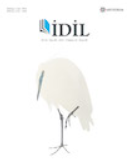
Keywords: Hearth; Housing; Cultural Sustainability; Traditional Turkish House;
From the cave to today's residence, in addition to the need for shelter in every place, nutrition has been another important need. While the nutritional needs were met, the concept of the hearth was formed with the discovery of fire and the emergence of the act of cooking. The hearth, which continues to exist in different forms in shelters; It has also had an important place in Turkish culture over time. The cultural sustainability of the concept of the hearth, which can still exist today under different names and places, is a matter of debate. The aim of the study is to examine the spatial and structural changes of the concept of hearth and its cultural sustainability. In this context, a literature review on the use of the concept of hearth in four different periods has been made and its position in the space has been examined. In addition, online and face-to-face surveys were conducted with age groups in three different generations (X, Y and Z generations) in order to evaluate the cultural sustainability of the concept of hearth. The questionnaire form was prepared on a Likert type scale, and the data at the end of the questionnaire were analyzed using the SPSS 23.0 program. While evaluating the data, frequency, percentile distribution and arithmetic mean were used. As a result of the examinations, the change of the concept of the hearth in the Turkish shelters was tried to be revealed, and inferences were made about the cultural sustainability of the hearth.
More...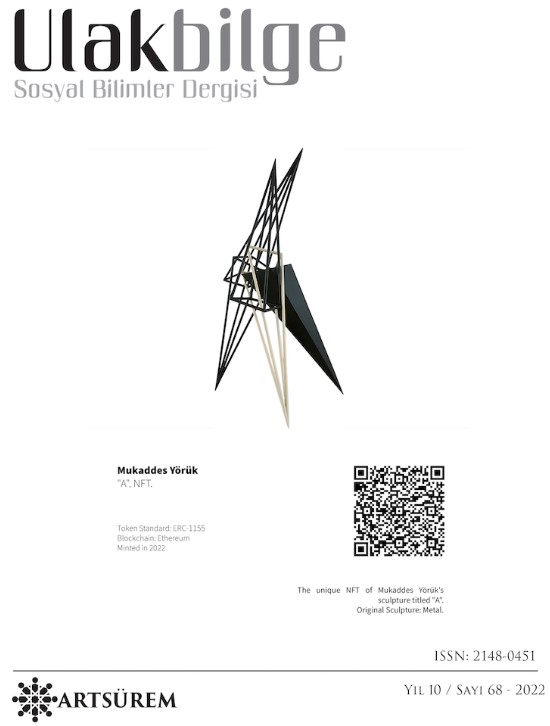
Keywords: Mythology; Turkish mythology; art;
Although the Turkish nation adopted the belief of Islam, the mythological symbols that were nourished by their past beliefs, they transformed some of these beliefs into a lifestyle and reflected them into their arts and brought them up to this time. In our rapidly globalizing age, as in all life, one of the things we need to live together as a nation is to adhere to our national culture. Therefore, we collect the Turkish mythology, which constitutes our national values, in our research by revealing its effect on Turkish art in a concrete way. Thus, it aims to bring out the elements of Turkish culture and reveal them, as well as transfer the culture of the Turkish nation to future generations through artists and students who are hoped to access this work. Based on this idea, the study examined works of art and the work of artists, starting with rock paintings made in the prehistoric period. As a result of research, it was determined that Turkish mythology has continuously influenced our art for thousands of years.
More...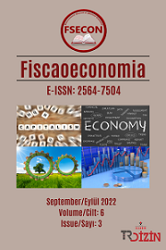
Keywords: Orthodox stabilization programs; heterodox stabilization programs; inflation;
Stabilization programs are implemented with the aims of becoming the economy -which the high inflation (hyperinflation or chronic high inflation) prevails- normal and exceeding the problems of balance of payments. Orthodox policies see inflation arising in the economy, the deficit in balance of payment and budget deficit as the sources of monetary expansion, overvalued exchange rate and disequilibrium in public sector resource expenditure. Whilst orthodox policies consider inflation as an only monetary phenomenon, heterodox policies are implemented based on the belief that structural defects and income conflict are embedded in the source of inflation. Heterodox stabilization policies have three pillars: price-wage controls, budgetary discipline and fixed Exchange rate policy. In the study, the decisions of January 24 and April 5 which have the quality of stabilization program are evaluated by analyzing previous and latter economic structure. In terms of the results realized, the implementation of 1980 program figure the problem of balance of payment out relatively at the cost of distorting public finance equilibrium, being income distribution ineffective and becoming the economy open to the speculative foreign capital fluctuations. 1994 decisions provide returning the spiral of interest-exchange rate scissors by evaluating the economic crisis as a deviation.
More...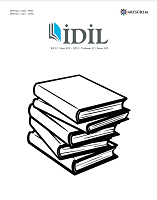
Keywords: Turkish culture; leatherworking; saddlery; horse harnesses; saddle;
As commonly known, leather work has an important place in handicrafts in Turkish culture. We see this in the leather handicrafts in Anatolia that have reached the highest artistic value from the simplest craftsmanship. One of these works, which has survived from prehistory and is still tried to be continued in various regions of Anatolia, is saddle production. Today, rich and ostentatious examples of Turkish saddles are exhibited in museums at home and abroad. While people use horses as both mounts and load carriers in daily life, they have also been used as war vehicles throughout history. In the historical process, while horses were tamed by people, first they were stamped, then belts and bridles were used, a saddle was placed on the tamed horse and thus, the horse was put to the service of humanity. In the steppes of Central Asia, horses were domesticated by the Turks and gained an identity in history. A nation that dominated the horse has sought ways to use it comfortably. It is known that learning traditional handicrafts is mostly done as a family profession. Saddle making is one of these professions. While people learn their professions from their masters, they also add other features to their art over time. Thus, the characteristic and originality of art emerges here. Saddle-making, which has developed within the framework of craft from the past to the present, is an important art that carries the rich heritage of Turkish society to the present. The geographical location of the Turks at the intersection of different geographies has enabled them to interact with many societies in the field of horse harness and saddle making. Turks, as a warrior society, have increased the importance of horse harnesses and military saddlery materials, thanks to the importance of horsemanship and militancy. In this study, the historical development of Turkish saddles from past to present has been examined and the place and importance of saddles in Turkish Culture has been emphasized.
More...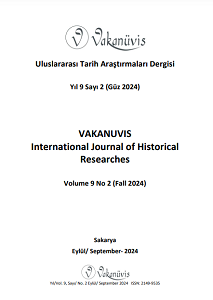
Keywords: İsmet İnönü; Winston Churchill; Second World War;
Review of: Nesrin Akkor, Churchill - İnönü Savaşı Adana Görüşmeleri (30-31 Ocak 1943), Kriter Yayınevi, İstanbul, 2023
More...